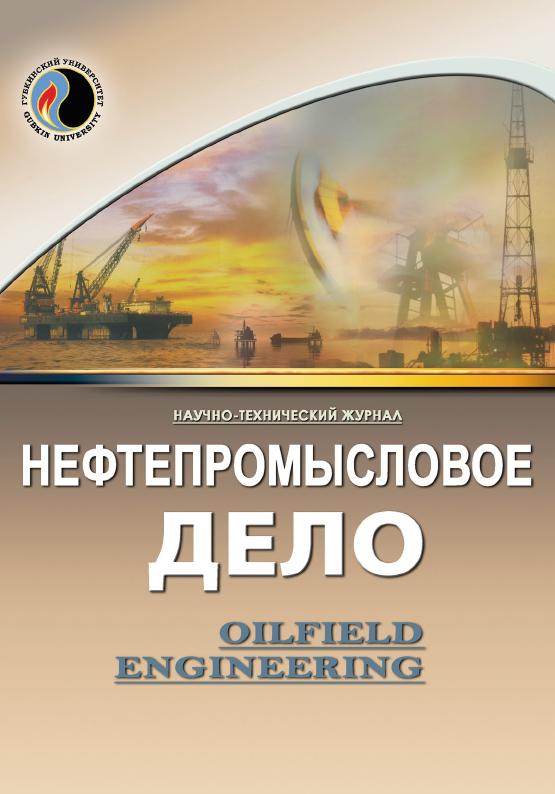Modification of the capacitance resistive model (CRM) for solving optimization problems of oil fields development
UDC: 622.276.1/.4.001.57
DOI: 10.33285/0207-2351-2023-11(659)-20-27
Authors:
SHEVTSOV NIKITA O. 1,2
1,2
1 University of Tyumen, Tyumen, Russia
2 Tyumen Oil Research Center
Keywords: well interaction, inverse problem, Capacitance Resistive Model (CRM), drained pore volume, well productivity coefficient
Annotation:
The use of water-flooding technologies in oil reservoirs is one of the most common methods of development, where the key success factor is efficiency when making decisions on the injection modes management. Therefore, simple, so-called proxy models, act as an alternative to complex and resource-intensive three-dimensional hydrodynamic models in mathematical modeling of petroleum development process. One of these models is the Capacitance Resistive Model (CRM), which is applied for getting a quick evaluation of inter-well connectivity. The classical formulation of the CRM model has a number of limitations, primarily related to the no-taking into account the non-stationarity of the productivity coefficients and the values of the drained pore volumes. The article proposes the model modifications that allow taking into account the dependence of these parameters on time. Due to the absence of spatial dimension in the CRM model, the problem of the influence of the shape factor of the drained pore volume is also considered. The modified model was tested in the wells of a real petroleum reservoir.
Bibliography:
1. Matematicheskoe modelirovanie dlya prinyatiya resheniy po razrabotke mestorozhdeniy / T.A. Pospelova, S.V. Stepanov, A.V. Strekalov, S.V. Sokolov. – M.: Nedra, 2021. – 427 s.
2. Sayarpour M. Development and Application of Capacitance-Resistive Models to Water/CO2 Floods: Ph.D. Dis. – Austin, TX, USA: University of Texas, 2008.
3. Semi-analytical models for calculating well interference: limitations and applications / I.F. Khatmullin, A.P. Tsanda, A.M. Andrianova [et al.] // OIJ. – 2018. – Vol. 12. – P. 38–41.
4. Integrating Model Uncertainty in Probabilistic Decline-Curve Analysis for Unconventional-Oil-Production Forecasting / A. Hong, R.B. Bratvold, L.W. Lake, L.M.R. Maraggi // SPE Res Eval & Eng. – 2022. – Vol. 03. – P. 861–876.
5. Soroush M., Kaviani D., Jensen L. Interwell connectivity evaluation in cases of changing skin and frequent production interruptions // J. of Petroleum Science and Engineering. – 2014. – Vol. 122. – P. 616–630.
6. State-of the-Art Solution of Capacitance Resistance Model by Considering Dynamic Time Constants as a Realistic Assumption / A. Lesan, S. Ehsan Eshraghi, A. Bahroudi [et al.] // J. of Energy Resources Technology. – January 2018. – Vol. 140.
7. Bekman A.D. Uchet geologo-tekhnicheskikh meropriyatiy pri modelirovanii razrabotki neftyanoy zalezhi metodom material’nogo balansa // Matematicheskoe modelirovanie. – 2022. – № 6(34). – S. 22–36. – DOI: https://doi.org/10.20948/mm-2022-06-02
8. Shevtsov N.O., Stepanov S.V. Sovershenstvovanie modeli material’nogo balansa dlya ucheta izmeneniya koeffitsienta produktivnosti skvazhin // Matematicheskoe modelirovanie. – 2022. – № 2(34). – S. 3–16. – DOI: https://doi.org/10.20948/mm-2022-02-01
9. Stepanov S.V., Vasil’ev V.V., Altunin A.E. Usovershenstvovannyy analiticheskiy metod razdeleniya dobychi i zakachki po plastam pri ikh odnovremennoy sovmestnoy razrabotke // Neft. khoz-vo. – 2015. – № 11. – S. 27–31.

